Guide to Buying Fabric Online
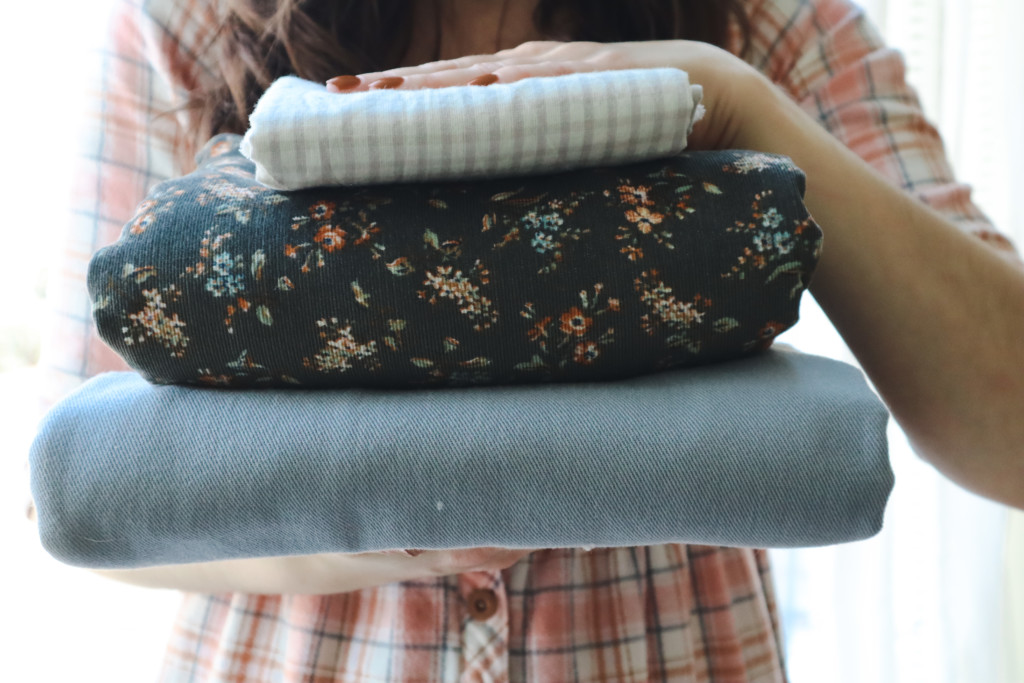
As you might guess, we’re pretty big fabric lovers around here, and we’re betting you are too. But there is a lot of fabric out there! It can be hard to know what to choose, where to find it, and what best suits which project. Here are a few suggestions to get you started.
We recommend shopping in person, at your local fabric store

If you are lucky enough to have a local fabric shop that caters to garment sewing, you have just hit the fabric jackpot! You’ll find knowledgeable staff people, ready to play matchmaker for fabric and pattern.
A caveat – sometimes big box fabric stores employ staff who are not very knowledgeable about garment sewing. Sometimes you’ll find a gem of an employee, but this is not par for the course. In general, we recommend patronizing smaller fabric shops for the best quality fabric AND service.
But we know shopping in person isn’t always possible, for a variety of reasons. (Toddlers? Living in the boondocks? Short on time? Mobility challenges? Only have a big box fabric store? All very understandable reasons to shop for fabric online!)
Buying online opens up a lot of possibilities, but also comes with a particular set of challenges
When you can’t touch a fabric in person, it can feel risky to order yardage. When there are so many sites out there, how do you know what to choose? Our friends at EWE Fine Fibers have collections specifically for Sew Liberated patterns. This is a great place to begin.
Having a few tried and true substrates to guide your purchases can help.
A substrate is the type of fabric being used. This refers to not only the fiber content, but also the type of weave and the weight of the fabric. We’ve listed a few of our favorite fabric substrates below.
Order swatches or ⅛ yard cuts. The first time you go on a new fabric site, check and see if you can order a few swatches. Some sites will offer this option, and whenever you order yardage, it can be a good idea to add a few swatches of fabrics you want to try as well. If the site does not offer a swatch service, go ahead and order ⅛ yard cuts of the fabrics you are interested in. The cost is generally pretty low, and you can use this fabric later in quilts or other projects, so it won’t go to waste. By ordering swatches or small cuts, you can make sure you like the color and feel of a fabric before committing to purchasing a project’s worth.
Our Favorite Wovens
Although we recommend a stable quilting cotton print for your first few projects (having a clear right and wrong side will save you so much head scratching as you’re first starting!) we have some substrate workhorses that will always serve you well in your sewing:
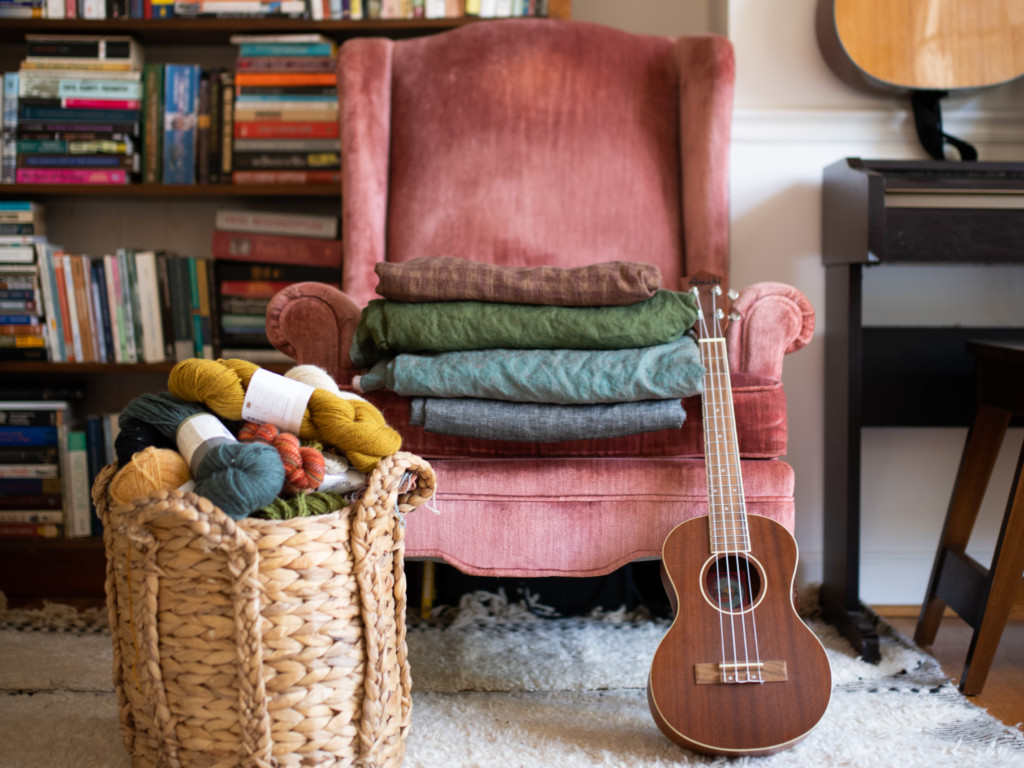
- Mid-weight washed linen. This is a softened linen between 4 and 8 ounces that is exceptionally versatile, long-wearing, and fairly easy to sew. An excellent, eco-friendly choice. We recommend it for: Hinterland Dress, Strata Top, Arthur Pants, Nocturne Pajamas, Lichen Duster, Otis Overalls, Forager Vest, Gathering Apron, or Penny Pinafore
- Brussels Washer Linen This is one of our favorite-wearing fabrics. It is a blend of linen and rayon, making it soft to wear and easier to sew than other rayons. Most often it is yarn dyed, which gives the fabric a textured, interesting look, adding dimension to an outfit. We recommend it for: Strata Top, Hinterland Dress, Metamorphic Dress, Arenite Pants, Forager Vest, or Estuary Skirt
- Mid-weight cotton flannel – While you’ll most often find plaid cotton flannel, you can often find lovely prints and solid colors as well. Stick to weights lower than 7 ounces for dresses and tops. You can use heavier weight cotton flannels for outerwear and trousers. We recommend it for: Nocturne Pajamas, Hinterland Dress, Arthur Pants
- Silk noil: The comfort and breathability of silk, without the difficulty of a traditional slippery silk. Silk noil has visible nubs that give it a great depth of texture, while also making it less frustrating to sew. We recommend it for: Strata Top, Arenite Pants, Nocturne Top, Penny Pinafore, Hinterland Dress, Forager Vest, Estuary Skirt or Gypsum Skirt
- Mora slub linen: Also called a viscose/linen blend, that like Brussels Washer, is a great wearing fabric with a beautiful, drapey, textured finish. We recommend it for: the Strata Top, Hinterland Dress, Arenite Pants, Gypsum Skirt, Penny Pinafore, Estuary Skirt, Nocturne Top, Metamorphic Dress, or Lichen Duster.
- Cotton Ikats: These cottons are yarn dyed with a pattern of different colored threads woven into the fabric. It is a stable but soft fabric produced in India. They are some of our favorite fabrics, and are great if you want to slowly introduce prints into your wardrobe. We recommend it for: Strata Top, Hinterland Dress, Metamorphic Dress, Nocturne Pajamas, or Gypsum Skirt.
- Cotton Double Gauze: Exactly as it sounds, this fabric is two layers of soft cotton held together. It is slightly trickier to sew. It is very breathable for warm climates and great for loungewear like our Nocturne Pajamas. We recommend it for: Nocturne Pajamas, Strata Top, Schoolhouse Tunic
- Tencel/Lyocell Twill: A drapey, woven fabric with a bit more weight to it. It is made from wood pulp, but the manufacturing process is much kinder to the environment than its cousin, rayon. Tencel (or Lyocell) is quite opaque and has a dense weave, but it is breathable and has a cooling effect. Look for Tencel twill, which is a nice choice for pants or skirts that are designed to be flowy – though it can work well as a dress or top, too. We recommend it for: Nocturne Pajamas, Arenite Pants, Gypsum Skirt, Estuary Skirt, Lichen Duster, Penny Pinafore,
- Rayon Challis: A drapey woven fabric that is a good next step to try once you feel confident with sewing. It takes a bit more care due to its light hand and slippery nature, but sews up into lovely garments. It is great for patterns with lots of pleats or gathers, or puffy sleeves, or times when you’re looking for quite a bit of drape. Do note that rayon, while made from wood pulp and not plastic, is not a very eco-friendly substrate due to the processing that happens while making the pulp into fabric. Use it sparingly. We recommend it for: Strata Top, Arenite Pants, Nocturne Top/Pajama set,
Our Favorite Knits
- Cotton Jersey/Organic Jersey: Jersey knits are a great workhorse fabric. Stretchy but stable, and easy for those new to sewing knits, jerseys make great tee shirts, bodysuits and leggings. We particularly love organic jersey for its softness. We recommend it for: Stasia Dress and Tee
- Cotton Interlock/Organic Interlock: Interlock is a double knit, making it just a bit thicker and a bit less stretchy than jersey. Interlock is a great choice for tunics, dresses, sweatshirts or joggers. We recommend it for: the knit view of our Arenite Pants, as well as the Nest Sweatshirt
- French Terry: French Terry is a thicker knit with a looped texture on the inside. It is very cozy to wear and fun to sew. We recommend it for: the knit Arenite Pants.
- Sweatshirt Fleece: Most sweatshirts you find in the store are made from sweatshirt fleece. It is a smooth knit on the outside with a cozy, fleece inside. A bit trickier to sew due to its relative thickness compared to jersey and interlock, it makes great loungey basics.
- Bamboo Jersey: Bamboo jersey is a blend of cotton and bamboo fibers to make a very drapey, soft jersey. You might find it more slippery to sew than a standard cotton jersey, but the results are well worth it. We recommend it for: Talam Jumpsuit, Stasia Dress
You’ll also want to purchase some muslin
Fabric for sampling is so important, and helps you refine your fit and sewing techniques before you cut into your precious new fabric. You can use the search term “muslin” to buy a really basic cotton fabric that is not meant for making finished garments, but really shines as a sample making fabric. If you’re sewing with knits, try to find a fabric similar to your final fabric in hand and stretch percentage, but it doesn’t have to match in fiber content or color.
These substrates are just a starting point, and eventually you will likely want to venture past them. The more you sew and use different fabrics, the more comfortable you will begin to feel trying new ones. Be sure to prewash your fabric as you would the finished garment. This will allow any fabric shrinking to happen beforehand, rather than after you’ve sewn an entire piece.
When buying new (to you) fabric online there are a few things to look for. The first is the weight of the fabric. This might be listed in ounces or by description, i.e bottom weight. Many sites will also list the opacity. They’ll tell you if a fabric is a little translucent and thus more suitable for tops vs. dresses or bottoms. Be sure to look for the fiber content. This is where you can find if a fabric is natural or synthetic, a blend or one fiber. All of these factors affect drape and feel. And with knits, see if there is a listed stretch percentage listed. Most knit patterns will list an ideal stretch percentage, use that as your guide when buying online. A good online fabric store should list all of this information in the description of the fabric. Be wary of vague sites.
You can also find cuts of these fabrics on places like Etsy, or in maker swaps.
As with most aspects of making, when looking for fabric take it slow.
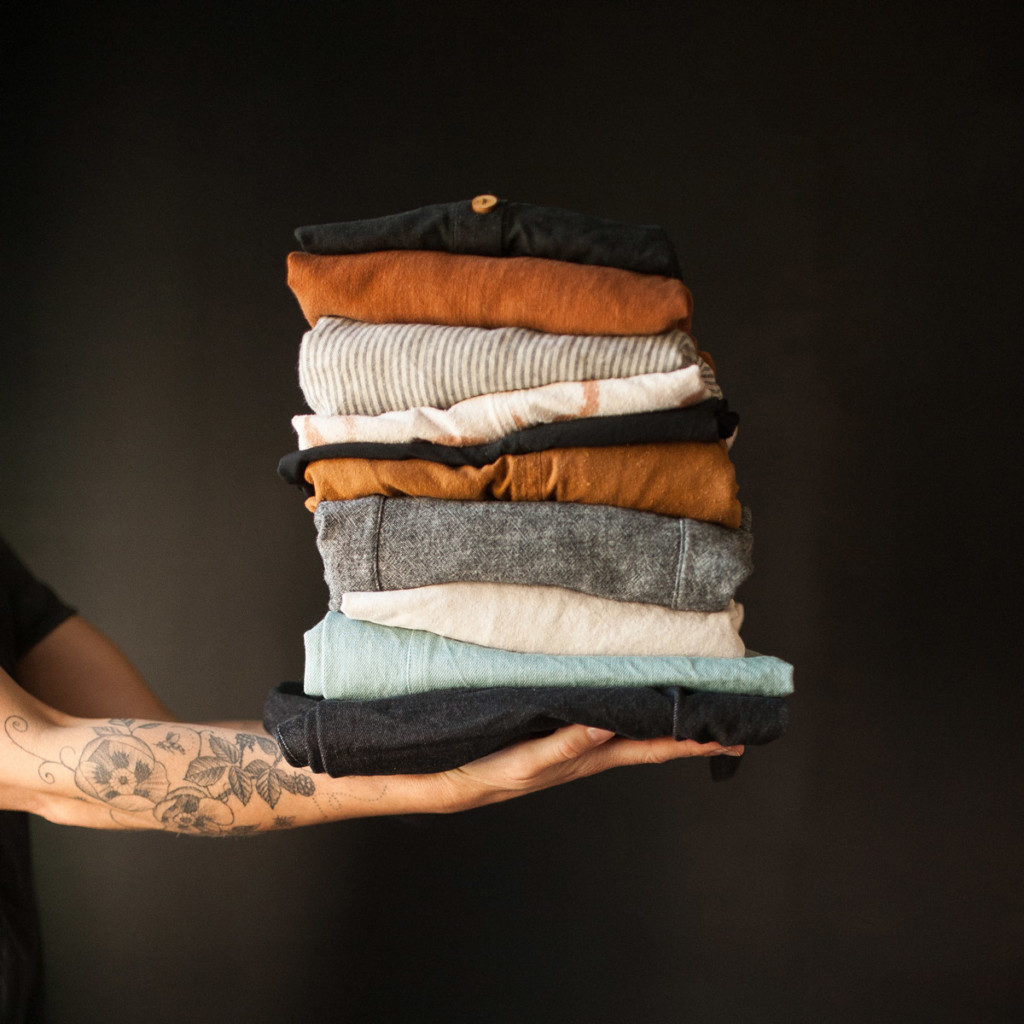
The choices may seem overwhelming, but you probably know yourself better than you think, and deep down may have a sense of what you want. Go one project at a time, especially when you first begin sewing. Write down a few words to describe what you are looking for, like “woven, stable, bright, beginner friendly” or “knit, drapey, earth toned, natural fiber,” and use those to guide your search. Always look on the back of your pattern envelope for the recommended fabrics as a jumping off point. You can even search a pattern’s hashtags to see what other makers used for inspiration. As you sew, think about what you like or don’t like about the fabric, and keep that in mind when you look for your next project. Having a notebook by your sewing machine or computer, where you can keep these notes and maybe add some swatches is really helpful! Or adding a section in your bullet journal is another way to keep your fabric experiences noted for the future. The more you sew, the more you will learn about fabric, and about your personal preferences. Everyone is a little different. Try not to feel too much pressure to follow the trends, and instead stay true to yourself. Not every fabric and make will turn out exactly as you hoped, but each one will help you learn and grow as a sewist.
-Meg, Judith, and Meredith
Further reading for the fabric obsessed
- FabricLink: Textile Dictionary– a great online resource for fabric terminology
- StartUp Fashion Fabric Dictionary– another great online fabric dictionary
- Dictionary of Fiber & Textile Technology– if you prefer a hard copy, and want to really get into the gritty details of fibers and textiles, this is a great choice
- Fabric for Fashion: The Swatch Book Revised Second Edition (Spiral bound)– this one is a bit pricey, but a great resource if you can find it at your library or through interlibrary loan
- Textilepedia– One more option for good measure


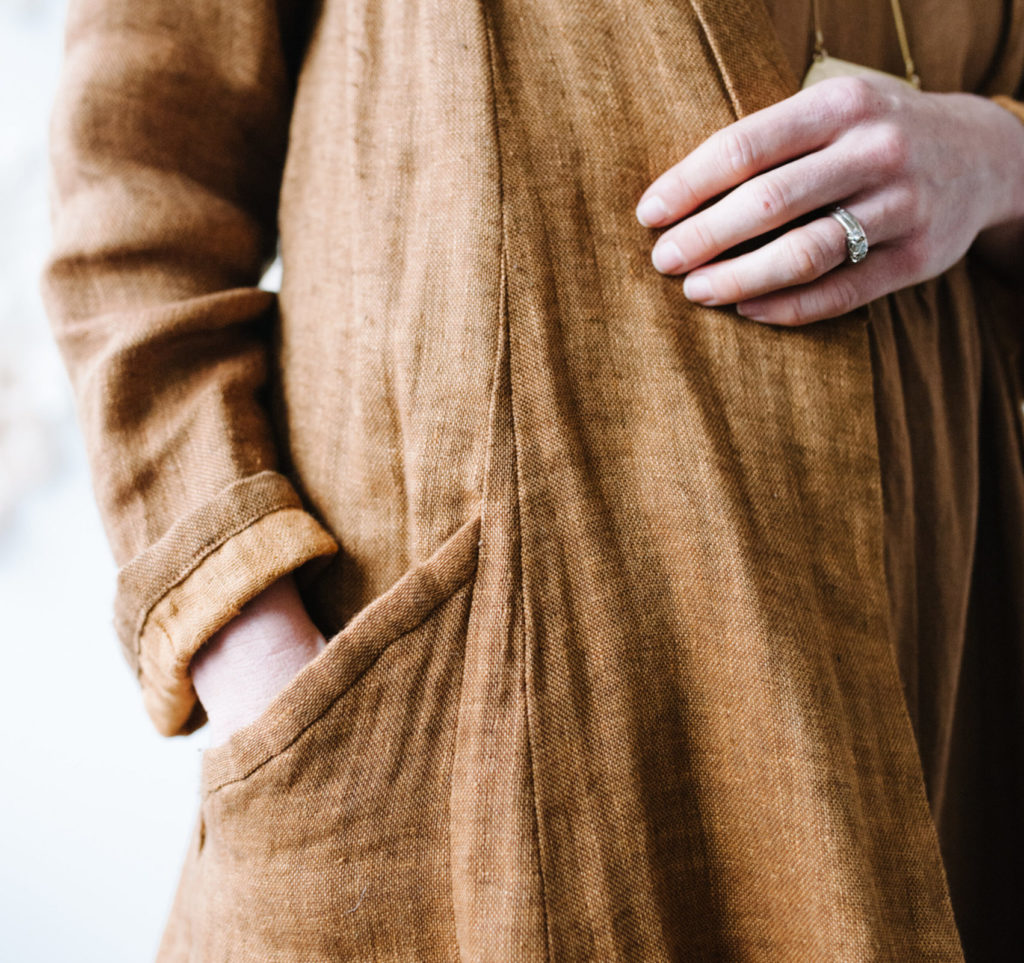
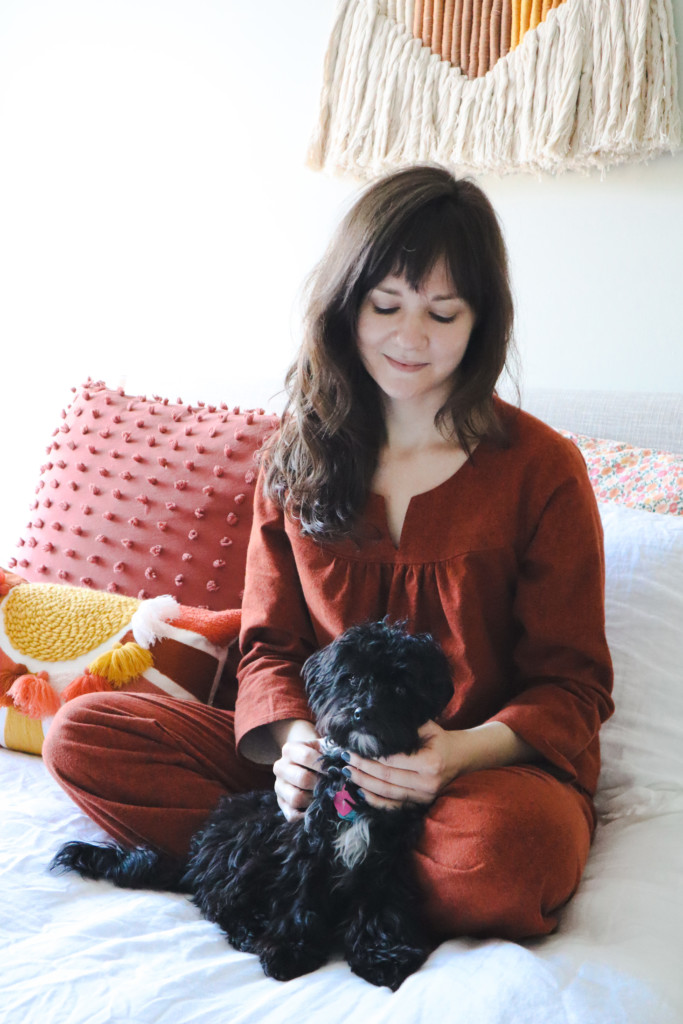
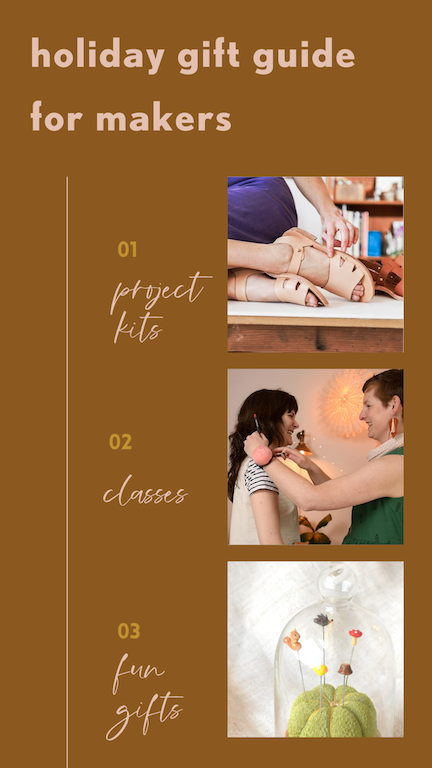
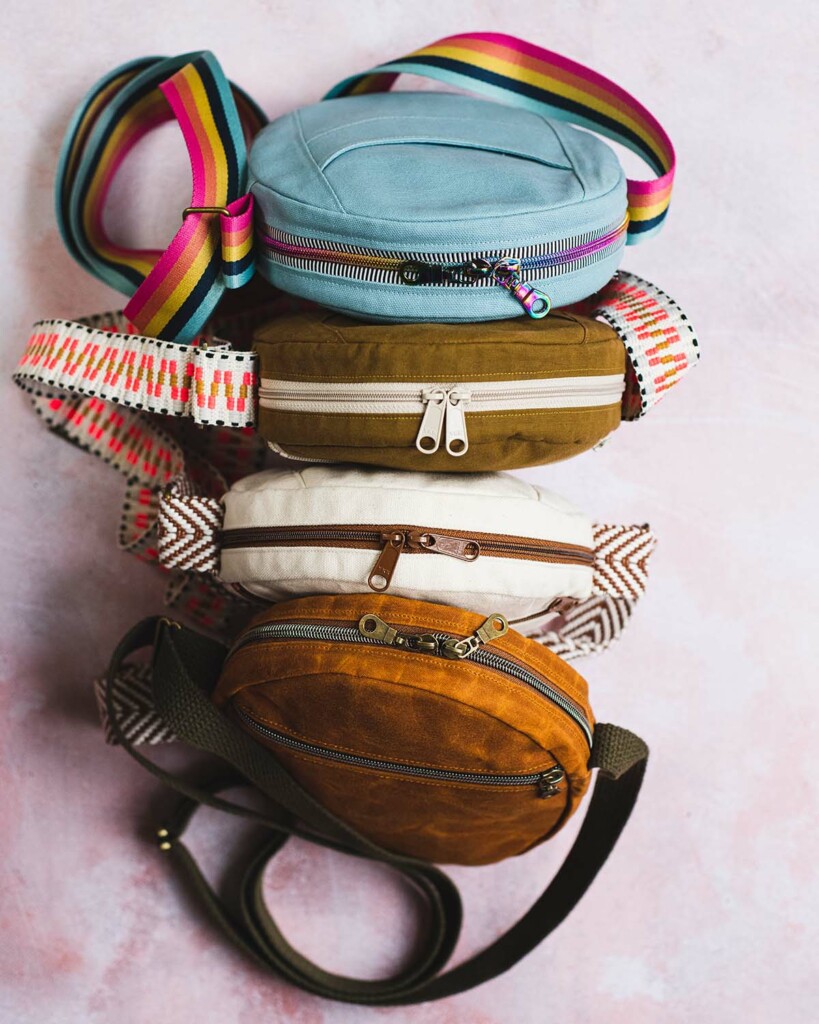
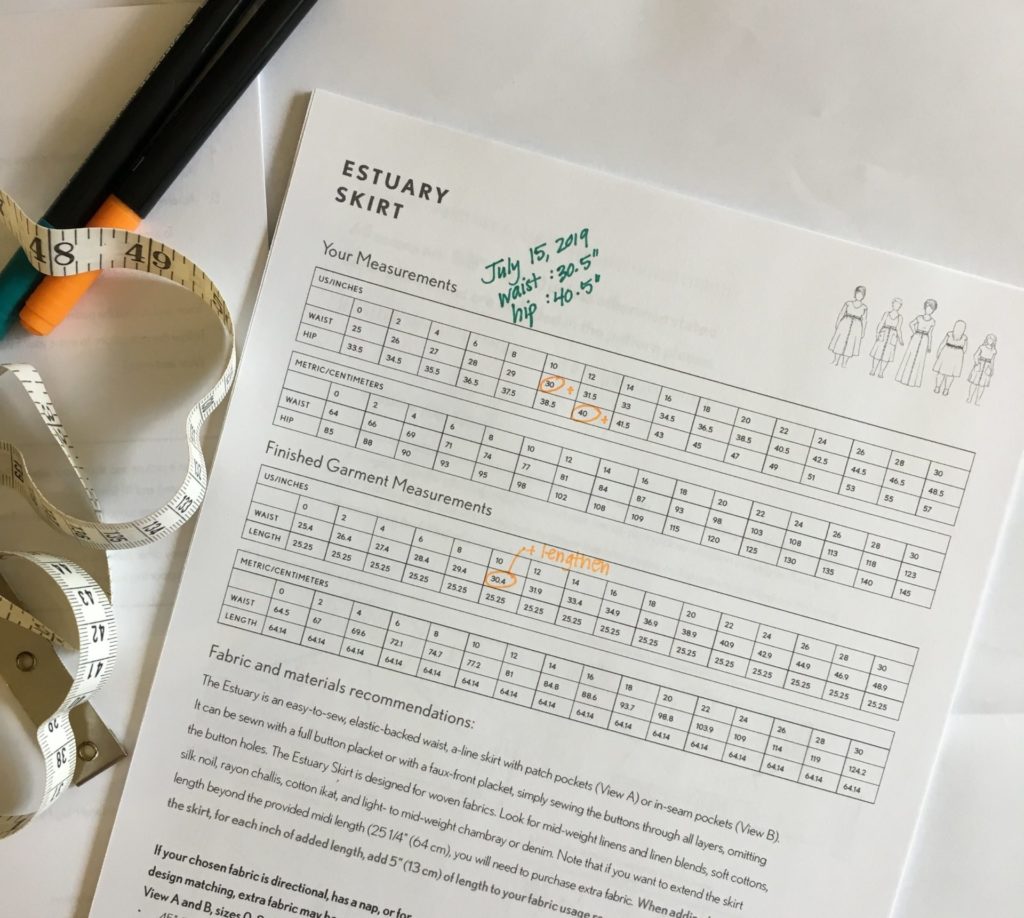
Yes, but where? I would love links, to each fabric used. The pajama outfit in brown print is gorgeous.
Hi Sayra,
Some of the fabric shown is from our stashes, and some from local stores. We didn’t put links because everyone’s access point and preferences are different, and we intended this as a general guide applicable no matter where you shop. Some places we go to online are Stone Mountain and Daughter, Ewe Fibers, Blackbird, and I See Fabric. Closet Core has a fairly exhaustive list on online stores here, https://blog.closetcorepatterns.com/the-ultimate-list-of-online-fabric-stores/
This is incredibly helpful. Thank you!
What kind of upholstery is good for making suits? Thanks
Hi Sandra! We don’t recommend upholstery fabric for garments. Wool Crepe or other wool suitings would be excellent.
Hello! I’m trying to understand what the difference is, when buying bulk fabric, between “folded” and “rolls”. Would you happen to have know what these terms mean? Please and thank you!
I’m sending you an email! 🙂
Can you see a liberty of London cotton lawn used for a lichen duster? I want it for a light weight summer robe and I would add buttons down the front. The lawn would be an overall pattern so no matching. What do you think? Otherwise I’ll look for tencil or thin linen. Thanks!
Hi Rebecca! A liberty tana lawn would work, but it is a very delicate fabric, so take care with the gores. I would definitely give it robe vibes more than a duster look, but is sounds like that is what you are going for. If you intend to wear it over other things I would choose a lightweight linen instead. As for adding buttons, that is a bit trickier. Send us an email at support@sewliberated.com and we will try to help you out.